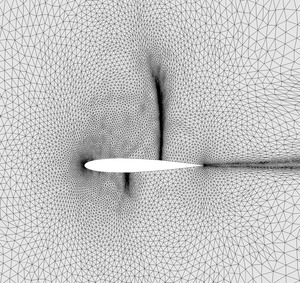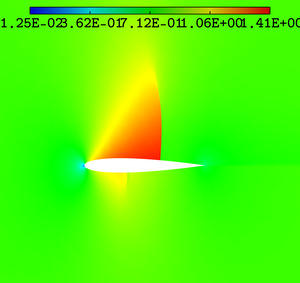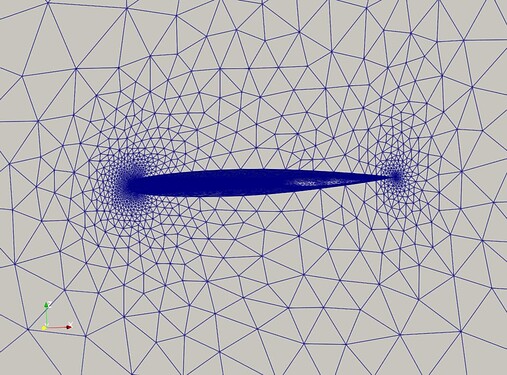Hy all,
I’m trying to to generate an anisotropic mesh in order to capture a shock around an airfoil in a CFD simulation made with SU2.
The result that I’m trying to get is something similar to the following picture (my case is 3D):


I’m using the density flow field in order to compute the metric, using mshmet. I haven’t found much documentation about this software, I hope I’m using it correctly.
the command that I use is:
mshmet -temp.mesh -eps 0.0001 -hmin 0.001 -hmax 10
The dentisy flow field is stored in the file .sol with the same name of the mesh. (temp.sol)
Mshmet saves a file temp.new.sol containing the metric. It has 6 columns for each row (vertex).
Then, the new mesh is generate by mmg3d with the followiwng command:
mmg3d_O3 temp.mesh -sol temp.new.sol -hgrad 1.5 -hmin 0.001 -hmax 10
Iterating this procedure, I got this result:
It captures only the density gradient near the stagnation point, but doest not capture the shock.
I’ve already tried varying all the parameters, including the flow field for the computation (I also tryied Mach number), but my result is not close to the expected one.
Can anyone tell me what I’m doing wrong?
I was also wondering the difference between hmin and hmax of mshmet and mmg3d.


